




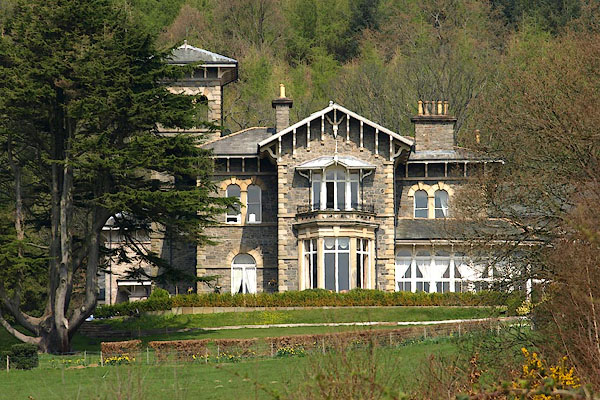
BPB96.jpg (taken 22.4.2008)
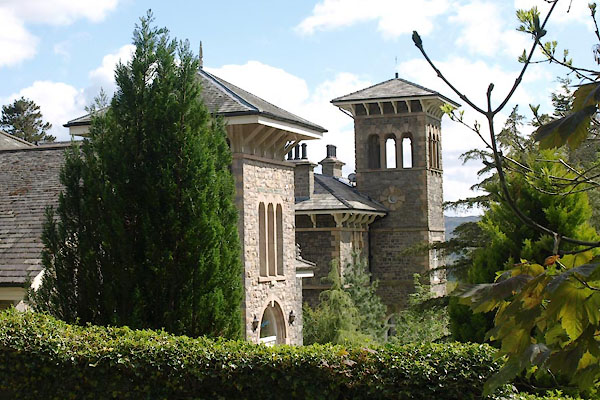
BYJ18.jpg (taken 21.5.2013)
placename:- Underscar
placename:- Underscar Manor Hotel
courtesy of English Heritage
"UNDERSCAR MANOR HOTEL / / / UNDERSKIDDAW / ALLERDALE / CUMBRIA / II / 479596 / NY2702325627"
courtesy of English Heritage
"Hotel, formerly private villa. 1856 -63, with later extensions, and mid- C20 alterations, refurbished and altered to form hotel 1990. By Charles Reed, ( the name later changed to Verelst ) architect, of Liverpool, for William Oxley, merchant, of Liverpool. Irregular snecked rubble with ashlar sandstone dressings, rusticated quoins, tall stone chimneys with moulded caps and hipped roof with deep bracketed eaves, and a Westmorland slate covering, laid to diminishing courses. Bold Italiante style"
"PLAN: Irregular linear plan, set on sloping ground and aligned north-south, with house part to south and attached service wing to north. ENTRANCE (west) ELEVATION: Symmetrical 3-bay frontage range of 2 storeys, with taller advanced 4-stage central entrance tower with shallow pyramidal roof and deep bracketed eaves. Main doorway with semi-circular arched and moulded ashlar surround, and double 3-panel doors Above, C20 3-light window has replaced oriel. Upper stage with triple lancets with semi-circular arched heads. Flanking bays with ashlar bands to heads and cills, tall ground floor windows, one with original sash, the other with C20 french doors. Semi-circular heads, channeled to imitate voussoirs. First floor coupled-light windows with semi-circular arched heads to lights and undivided sashes. To the left, lower range links with hipped gable of tall service range SOUTH FRONT: Wide advanced gable set back from line of west front, with oversailing verges supported by massive brackets. Tall canted ground floor bay window to centre, with pierced parapet topped by low railings. Above , tripartite window with bracketed open pediment . To right, added late C19 7-bay conservatory with canted east end. To the north of the conservatory, wide west-facing gable with 5-light first floor window, the centre light blind and forming niche for an urn. Lower 2 storey range to right links with hipped rear gable of 3 storeyed service range."
"INTERIOR: Contemporary interior carefully restored as part of change of use to hotel. Wide entrance lobby with glazed doors and fanlight leads onto tall stair hall via semi- circular arched opening. Stair hall with deeply moulded cornice , deep skirtings, moulded architraves and a wide, flat arched opening onto the staircase. Dog-legged staircase, lit by a wide, semi-circular arch-headed tripartite window, has moulded handrails and cast-iron balusters of 2 different patterns. It leads to a first floor landing with a central open well lit by an octagonal lantern. Its surround is formed from wide coved panels, each with a central roundel bearing a moulded classical plaster figure in deeply relief. Below, a bracketed cornice is set a bove a wide decorative frieze. Ground-floor reception rooms with 6-panel doors, deeply moulded cornices and marble chimney pieces. Conservatory with closely spaced and moulded roof trusses with roundel apexes with pendant bosses."
"HISTORY: The land on which the building stands, together with other parcels of land , was purchasesd by William Oxley in1856 for o1340. The house was completed in 1863. The house was sited within extensive grounds, set with specimen trees, and with a walled garden to the east., and enjoys unrivalled views of Derwentwater. William Oxley died in 1861. An extensive and prominent villa in the Italianate style, spectacularly sited and recently carefully refurbished, the style and siting of which aptly characterises the flavour of the mid-late C19 developments around the Cumbrian Lakes by industrialists and entrepreneurs."
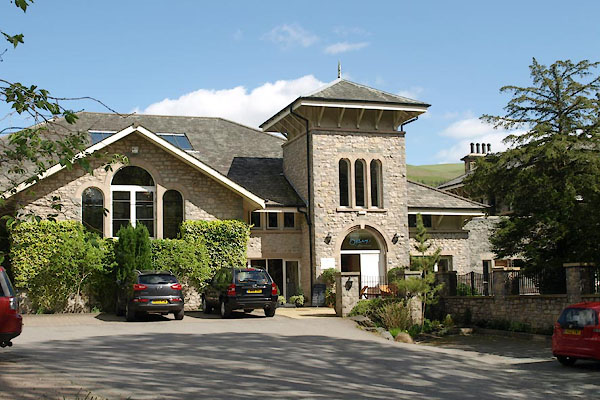
BYJ17.jpg (taken 21.5.2013)
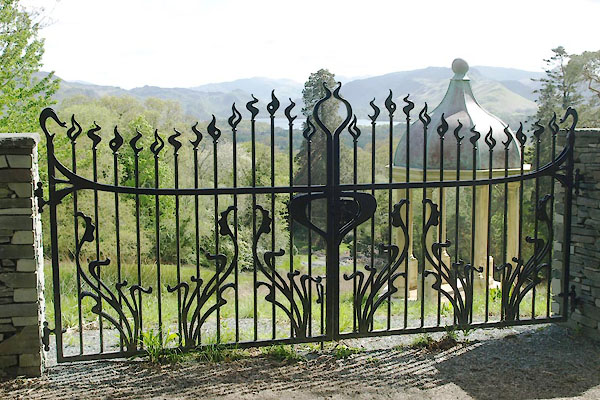
BYJ19.jpg Gate,
(taken 21.5.2013)
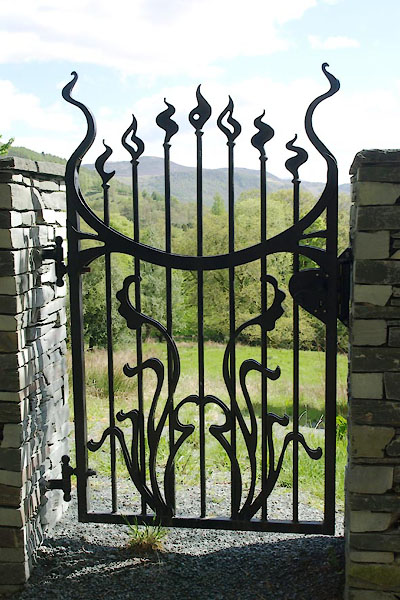
BYJ20.jpg Gate,
(taken 21.5.2013)
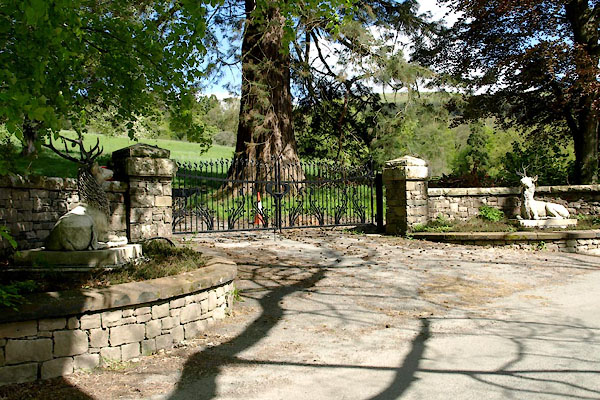
BYJ23.jpg Gate,
(taken 21.5.2013)
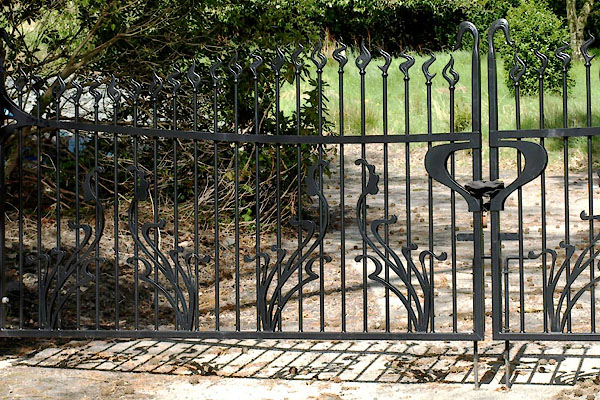
BYJ24.jpg Gate,
(taken 21.5.2013)

 Lakes Guides menu.
Lakes Guides menu.